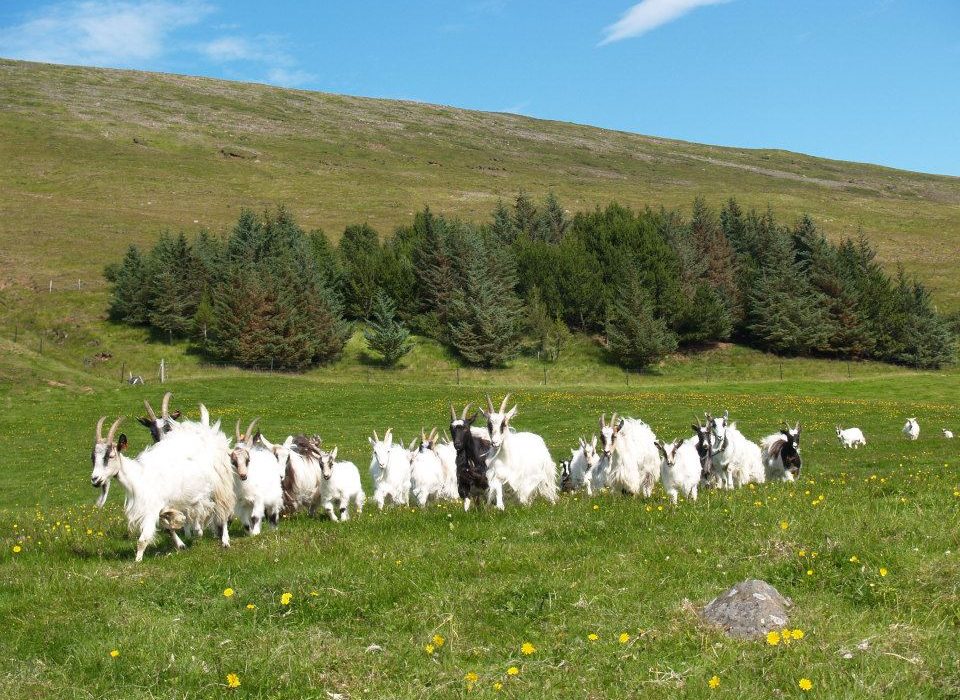Goats

Icelandic goats have both tow and underwool, and the amount of underwool is considerably larger than in foreign breeds. The underwool is extremely fine and is categorized as cashmere. The goatskin is known as “staka.”
Archaeological analyses of animal bones show that goats were present at most farms in the 9th and 10th centuries but after that their number decreased. At the beginning of the 13th century goats had become rare but sheep had become commonplace.
Today, goats are found all around the country, except in Westfjords, but the ownership is very spread out. The goat population is in danger of becoming extinct.There is a small production of goat products such as meat, cheese, ointments and soaps.The “wool” and goat skins; leather and hides, are also used.
At the end of 2016, the population counted 1188 goats in 104 herds. If the goat population turns into a production stock, it could be the springboard it needs to overcome the dangers it is facing today.